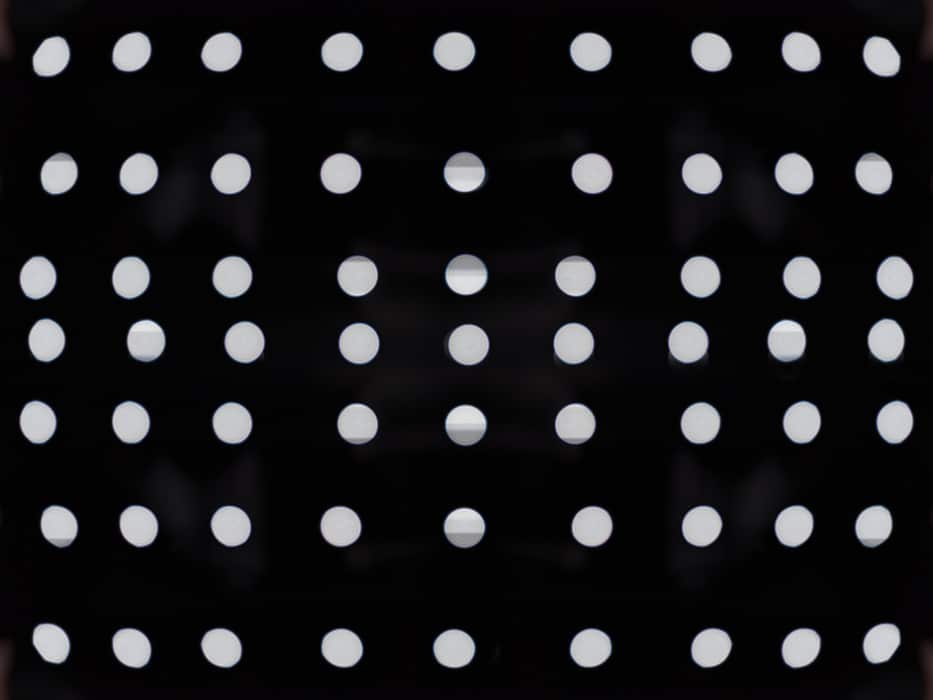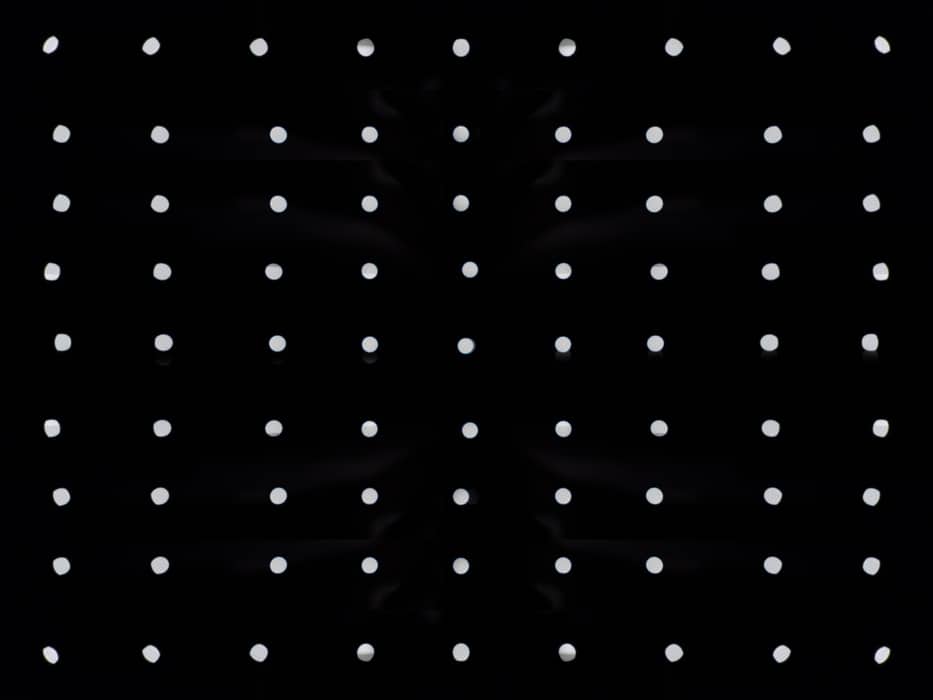This is the fifth post in a series of tests of the Fujifilm 32-64 mm f/4 lens on the Fuji GFX 50S. The test starts here.
There are two pieces to bokeh. The first is what things look like when they are well out of focus (OOF), and the second is how the transition from OOF to in-focus happens. The second is complicated, but the first is very simple. What you see when part of the image is well OOF is each point in the image times the OOF point spread function (PSF, in this case, aka bokeh balls). So you can understand what the bokeh in the OOF regions is gonna look like by looking at the OOF PSF across the frame. After you’ve looked at a few of these images that I’m going to show you here, you can see how the deep-OOF bokeh of just about any lens is going to look like with just about any scene.
The technique that I used to obtain the images below is explained here. I just moved the camera around and captured the PSFs all over the frame, then assembled them in Photoshop.
Here’s a set of PSFs with the 32-64 focused as close as it will go, wide open, with the zoom ring set to 64 mm:
Don’t worry about the horizontal shadings on the blur circles; that’s the LED flashlight modulating the beam. In a perfect world, all the balls would be round and constant intensity, with no colors off the gray axis. Hardly any lens can do that wide open. The 32-64 has a nice flat center disc, and only moderate occlusion as you progress towards the periphery. The occlusion in the very corner is a bit sudden.
At 32mm:
Of course, the discs are smaller, because there’s more depth of field at 32 mm. The corner occlusion remains a bit sudden, so the bokeh there with be a bit busy.
This is fine performance for a zoom lens.


Leave a Reply